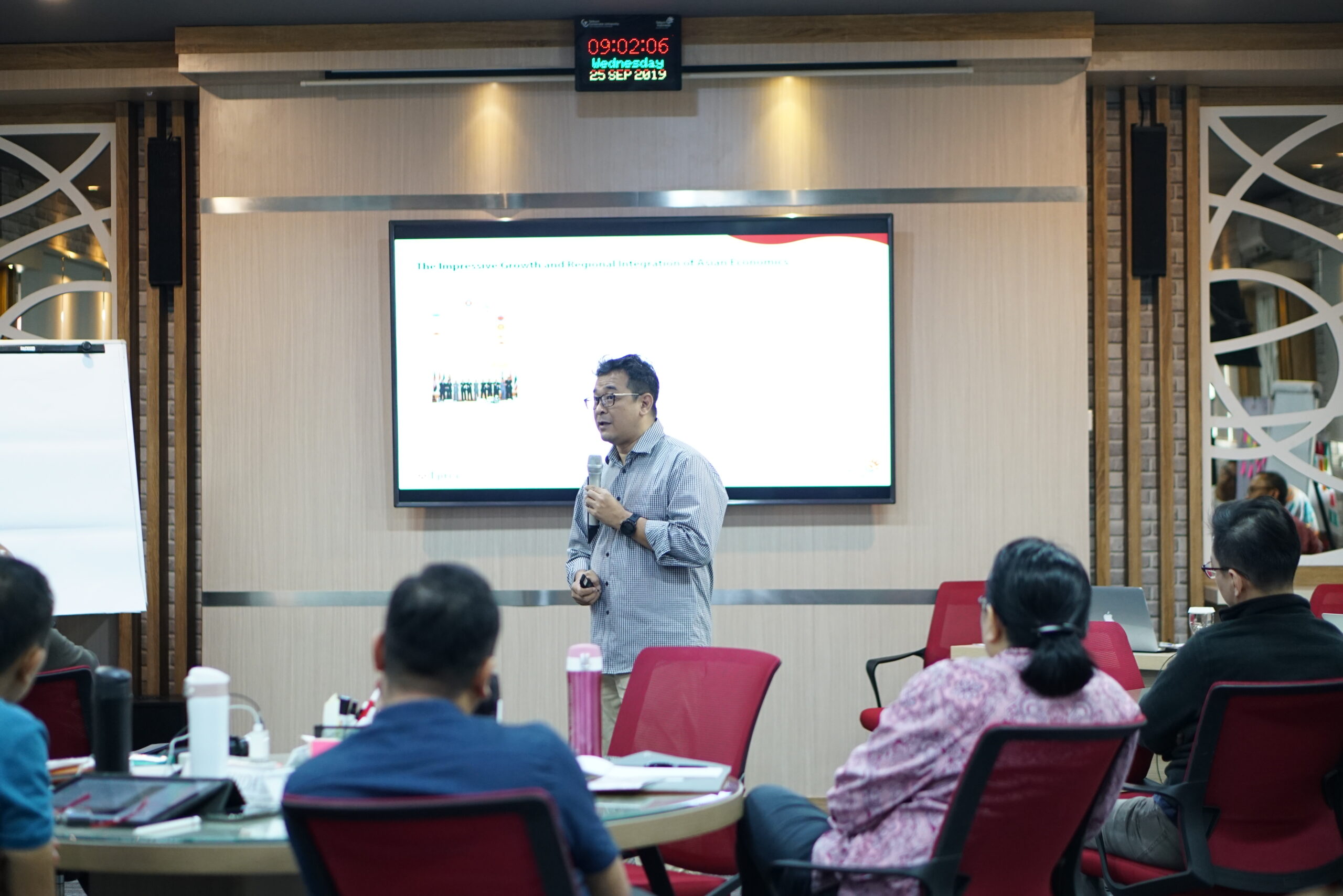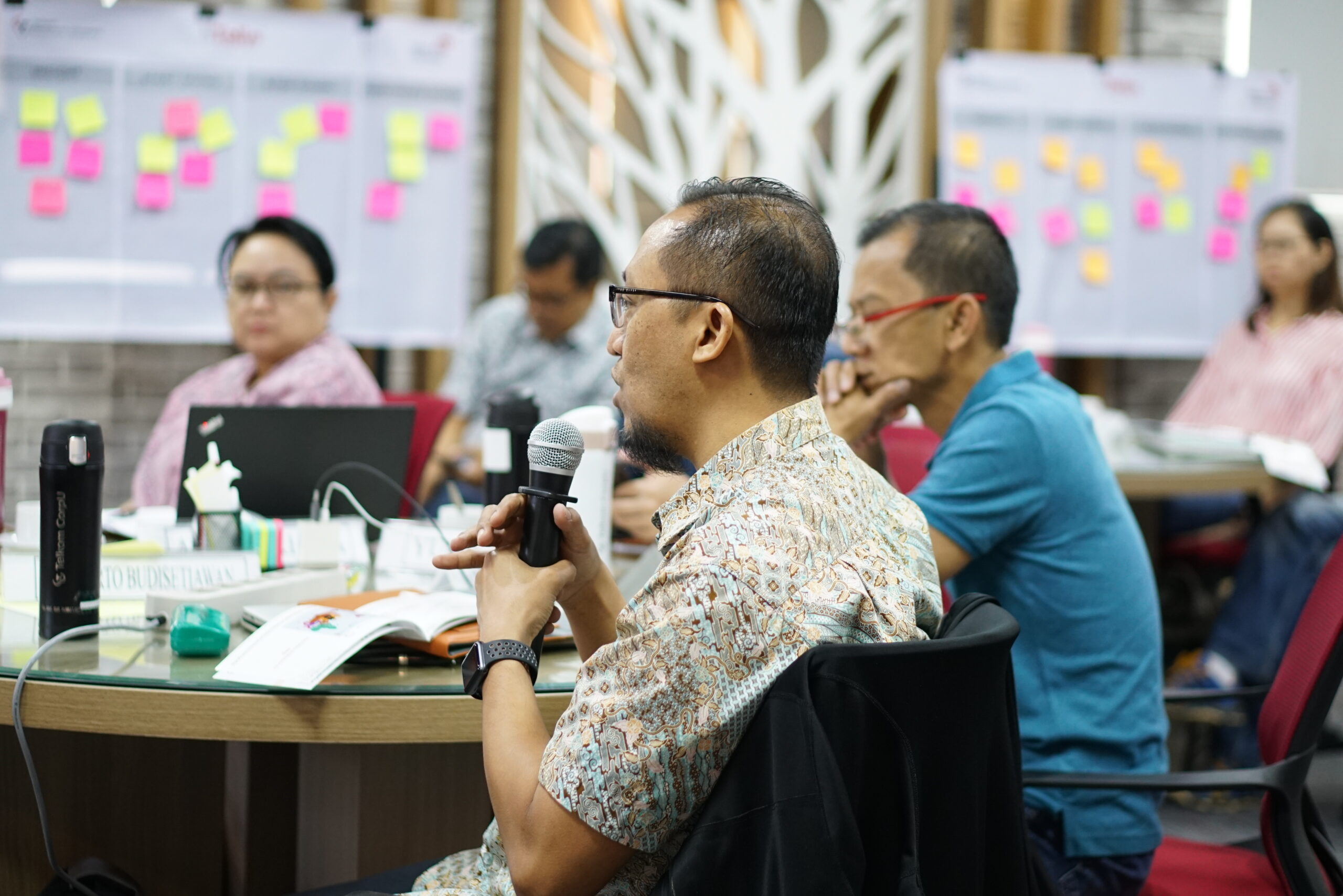 Project Type: Change
Project Type: ChangeLeadership Training: How to Lead Aspirational Change Programme
This topic is thoroughly discussed by Dr. Bob Aubrey, MBA, Ph.D and Dr.-Phil Hora Tjitra in the fourth day of Telkom Leadership Training. This training was attended by Telkom’s leaders who are expected to be able to lead change and transform Telkom as in their vision, “Be a King in Region.” The training is divided into four sessions.
In the first session entitled Leading Change: Transformation from National to Global Leader, participants were sharing about Telkom’s experiences in transforming aspirational change that had happened to become a global leader. However, this transformation is also important for Telkom to become an aspirational company and regional leader. It should be underlined that not all companies are aspirational companies. As said in the book “Creating Aspirational Leaders: The Global Workforce Advantage” written by Dr. Bob Aubrey, MBA, Ph.D, aspirational company has a strategy that align between business development strategy and employee development strategy. Besides, aspirational company has leaders who develop people according to their aspirations. To become an aspirational company, participants were asked to design a management model for Telkom. Knowing the management model, the company understands how to manage the organization and its people to be a good and successful company.
There are four aspects in management model:
- Purpose – what the goal is,
- Relationships – how you work together,
- People – who you work with,
- Change – how you adapt and growth.
Aspirational companies need to have aspirational leaders. How to develop and measure capability leadership is the topic of discussion in the second session. Leaders need to understand about themselves, especially in three areas. The balancing of three areas – aspiration, potential, and performance – can build the leadership capabilities. For the example, a leader who has good performance and high potential but not to take on the higher level of responsibility in the company cannot achieve success at the VP level. After knowing their aspirations, leaders need to define a Personal Enterprise Plan (PEP) that is aligned with the company needs. PEP can help to understand better of ourselves and formulate aspirations become the reality so that can balance career and lifestyle milestones. By designing the PEP, it is expected that leaders will know what they want that can lead changes to the company.
Aspirational leaders also need to build an aspirational culture that allows employees to realize their own aspirations that align with the company aspirations. In this case, aspirational leaders will act as mentors for their employees. This is discussed in the third session. In addition, this session also discussed measurement for business development, product development, or people development. The development is critical to be measured to determine the improvement from the previous state until the aspiration is achieved. The development measurement uses Key Development Indicators (KDIs). In this session, participants can create an KDI indicator of the area that is expected to develop.
The activity in the last session is formulating Telkom’s strategy to achieve its vision after obtaining lessons from the previous sessions. This strategy as a form of action in developing global capability on leading change is formulated with four aspects, namely 1) role models, 2) understanding and conviction, 3) skills and capabilities, and 4) organizational system and process. In the end, the training shows aspirational company need leaders who have their aspirations and can build aspirational culture that align with company aspirations. For long term goal, the company can achieve its vision by developing people.





